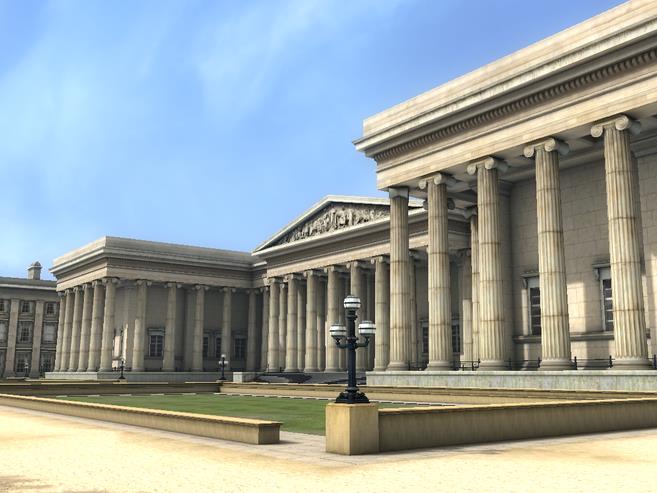The Dja Dja Wurrung barks, produced in north central Victoria in 1854, are some of the most significant objects in Australian history.

Collected by John Hunter Kerr from the Dja Dja Wurrung people, on whose country Kerr’s squatting lease was located, these are some of the earliest extant Aboriginal documents from the first generation of contact in Victoria.
In 1854 the Dja Dja Wurrung barks were displayed the Sandhurst exhibition in Bendigo and the Melbourne Exhibition, and a year later at the 1855 Exposition Universalles de Paris.
The Dja Dja Wurrung barks, held in the UK by the British Museum and Kew Royal Botanic Gardens, have been returned twice to Australia: in 2004 for the Museum Victoria’s exhibition Etched in Bark 1854, and for the current National Museum of Australia’s exhibition, Encounters.
In 2004, an Emergency Declaration to prevent the return of the barks to the UK was sought on behalf of Dja Dja Wurrung Elders under the Aboriginal and Torres Strait Islander Heritage Protection Act (1984).
The claim failed, but the push for a cultural centre where Dja Dja Wurrung cultural material can be displayed, studied and contextualised is mounting.
Repatriation is a complex issue. In 2002, in the face of heightening campaigns for repatriation, 20 directors of major collecting institutions, including the British Museum, signed a declaration defending the importance of “universal museums”, arguing:
We should, however, recognise that objects acquired in earlier times must be viewed in the light of different sensitivities and values, reflective of that earlier era. […] The universal admiration for ancient civilisations would not be so deeply established today were it not for the influence exercised by the artifacts of these cultures, widely available to an international public in major museums.
While the term “universal” has been usurped by “encyclopedic” as the preferred trope, the argument made in 2014 by the president of the J Paul Getty Trust is essentially the same:
By preserving and presenting examples of the world’s cultures, [encyclopedic museums] offer their visitors the world in all its rich diversity.
In contemporary Australia such arguments appear hollow. Held in the British Museum, and accessible through loan and display, the Dja Dja Warrung barks are contextualised by reference to the British Empire of the 19th century.
Of course, loan and exhibition can produce useful outcomes. But arguments about benefit remain unquantified and unassessed, and the debates relating to the creation, trade, possession and attempts at repossession of the Dja Dja Wurrung barks are surrounded by competing narratives, chronicling agency and choice, dispossession and powerlessness, tradition and innovation, continuity and endurance, and change and transformation.
Competing evidence is used to argue what the trading of the barks meant. Some academics maintain that, under the brutal inequity of colonisation, the Dja Dja Wurrung had little choice but to hand over their cultural material to Kerr. Alternatively, this trade can be seen as indicating active agency.
But this focus removes this Dja Dja Wurrung history from a much broader, relevant and important context: that of the complex trans-continental trade and economic activity that has occurred across Australia for millennia, and in northern Australia as an international trade from at least the mid-17th century.
The trade in cultural knowledge and cultural material, often related through the narrative of song-lines, drew together the great Australian trans-continental sagas of creation and continuity.
The Dja Dja Wurrung barks are evidence of the expansion of this trade, fitting with the activism of William Barak (Wurundjeri 1824-1903), Tommy McRae (probably Kwatkwat 1836-1901), and Dhurga man Mickey of Ulladulla (c. 1820–1891).
In the 1950s at Port Keats in the eastern Northern Territory, Nym Bunduk painted Murrinhpatha custom and law for his friend, anthropologist W E Stanner.
Writing about Yirrkala in the early 1960s, when the Yolngu galvanized to fight against the Comalco bauxite mining proposal, missionary Edgar Wells identified the trade in bark paintings as important politically as well as providing social cohesion.
The Dja Dja Wurrung Clans Aboriginal Corporation’s 2014-2034 Country Plan outlined their goals for celebrating and safeguarding their cultural heritage, including:
Secur[ing] the right and means to effectively protect and manage cultural landscapes and sites [and]
Ensur[ing] Dja Dja Wurrung ancestral remains, cultural objects and collections are returned to Country, and protected
The cultural centre movement provides opportunities to rebuild the national narratives that were enabled by trade and sharing cultural practice. Major institutions can provide some context, but communities such as the Dja Dja Wurrung have the ability to fit new pieces into the jigsaw of Australian history.
To do so, however, this material needs to be available for Dja Dja Wurrung Elders and scholars. Research practice needs to reflect the ways in which Aboriginal knowledge in cultural production has been shared for millenia.
The issue is not therefore about ownership, but about who can best extend the knowledge these barks represent, and where can this best happen. On this criteria the British Museum seems an unlikely choice.
Encounters is on display at the National Museum of Australia until March 28, 2016. Details here.
This article was originally published on The Conversation. Read the original article.






